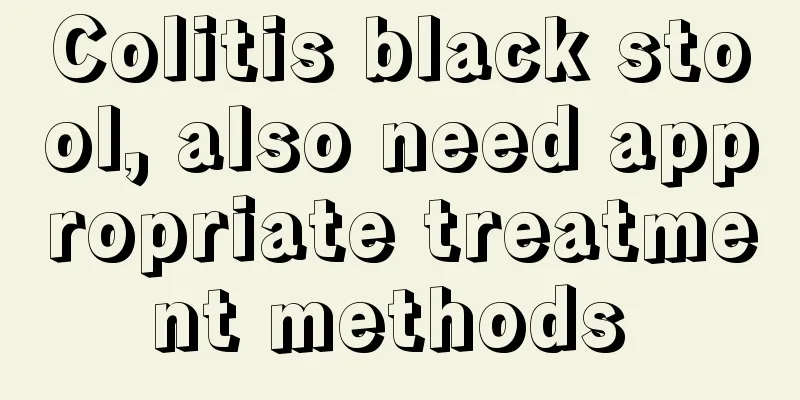What is adenomatous nodular goiter

|
The thyroid gland is one of the most important organs in the human endocrine system. Not only humans have a thyroid gland, but all vertebrates have one. Generally speaking, the thyroid gland is located below the thyroid cartilage in the neck. It is shaped like a butterfly and can help the human body produce protein and regulate the body's endocrine system. In life, the thyroid gland may also be diseased. So, what is adenomatous nodular goiter? Nodular goiter with adenomatous nodules is most likely to be a thyroid tumor. Thyroid tumors are divided into two types: benign and malignant. Benign tumors can be divided into thyroid adenomas and cysts. More than 95% of malignant tumors are primary thyroid cancer, and very few may be malignant lymphomas and metastatic tumors. 60% of thyroid cancer is papillary carcinoma, which mostly occurs in young people, more often in women than in men. It has low malignancy, grows slowly, and mainly metastasizes to the lymph nodes. After surgical treatment, the survival period is long and the prognosis is good. Another 15% are undifferentiated carcinomas, which mostly occur in older patients. The malignancy is high and lymph node and blood metastasis can occur in the early stage. Because the symptoms are obvious, patients can usually seek medical treatment in time. treat Benign thyroid tumors: Because thyroid tumors may cause hyperthyroidism (incidence is about 20%) and malignant transformation (incidence is about 10%), the thyroid gland should be mostly or partially removed (for small adenomas) at an early stage, including the affected side of the adenoma. The resected specimen must be immediately examined by frozen section to determine whether it has malignant transformation. Thyroid adenomas may become cancerous and may cause hyperthyroidism, so they should be removed surgically at an early stage. Surgery is the most effective treatment method. Regardless of the size of the tumor, it is currently recommended to perform a lobectomy or subtotal lobectomy on the affected side, rather than adenoma removal. The reason is that it is clinically difficult to distinguish between thyroid adenoma and certain thyroid cancers, especially early thyroid cancer. In addition, about 25% of thyroid tumors are multiple, and clinically only larger adenomas can be detected. Simple adenoma removal will leave small adenomas behind, causing recurrence in the future. Malignant thyroid tumors: Surgery is the basic treatment for all types of thyroid cancer except anaplastic cancer, and is assisted by iodine-131 therapy, thyroid hormones, and external irradiation. 1. Surgical treatment: Surgical treatment of thyroid cancer includes surgery on the thyroid itself and clearance of the cervical lymph nodes. There is still disagreement on the extent of thyroid resection, and there is a lack of basis for the results of prospective randomized controlled trials. However, complete tumor resection is very important, and meta-analysis data suggest that whether the tumor is completely resected is an independent prognostic factor. Therefore, even for differentiated thyroid cancer, resection of a portion smaller than the lobes is inappropriate. The smallest scope is the resection of the gland lobe and isthmus. Up to total thyroidectomy. The trend in the extent of thyroidectomy is towards more extensive resection. There is evidence that recurrence rates are lower after near-total or total thyroidectomy. The 30-year recurrence rate after lobectomy in the low-risk group is 14%, while that after total resection is 4%. Generally, there is not much debate about the scope of the first surgery for patients in the high-risk group. In stage III cases, the local recurrence rate was 26% after lobectomy and 10% after total thyroidectomy, with no difference between total and near-total thyroidectomy. The advantage of extensive surgery is a lower rate of local recurrence, and the main disadvantage is an increase in short-term or long-term complications after surgery. Lobectomy rarely causes recurrent laryngeal nerve damage and severe hypoparathyroidism rarely occurs. Recently, many scholars believe that age is an important factor in dividing low-risk and high-risk patients, and choose treatment principles based on low-risk and high-risk groups. For patients in the low-risk group, lobectomy and isthmus resection are used. If there is no tumor at the resection margin, the treatment goal can be achieved. For patients in the high-risk group, it is appropriate to adopt near-total or subtotal resection of the affected lobe and the contralateral lobe. The operation can also be designed according to the clinical characteristics of the tumor: Lobectomy + isthmus resection is suitable for low-risk patients with tumors less than 1 cm in diameter and clearly confined to one lobe of the thyroid gland; total thyroidectomy + isthmus resection + contralateral near-total thyroidectomy is suitable for patients with tumors greater than 1 cm in diameter, more extensive unilateral papillary carcinoma with lymph node metastasis; total thyroidectomy is suitable for highly invasive papillary and follicular carcinomas with obvious multifocality, enlarged lymph nodes on both sides, tumor invasion of surrounding neck tissues or distant metastasis. In cases under 15 years old or over 45 years old, the lymph node metastasis rate is high, reaching 90%. Total thyroidectomy should be considered for this group of cases. There is also controversy over the scope of cervical lymph node dissection. There is no consensus on whether to perform routine central cervical lymph node dissection or modified lymph node dissection, or to only remove palpable enlarged lymph nodes. Meta-analysis data suggest that only two factors can help predict whether there is cervical lymph node metastasis, namely, the lack of tumor capsule and tumor invasion around the thyroid gland. In patients without these two factors, the cervical lymph node metastasis rate is 38%, and in patients with both factors, the cervical lymph node metastasis rate is 87%. The surgical effect of neck lymph node dissection is certainly certain, but the patient's quality of life may be affected, so the decision to perform preventive neck lymph node dissection is currently made with great caution. Especially for patients in the low-risk group, if no enlarged lymph nodes are felt during surgery, cervical lymph node dissection may not be performed. If enlarged lymph nodes are found, they should be removed and quickly pathologically examined. If lymph node metastasis is confirmed, central neck lymph node dissection or modified neck lymph node dissection can be performed. The former refers to the removal of lymph node tissue on the inner side of the common carotid artery, around the thyroid gland, between the tracheoesophageal groove and in the upper mediastinum; the latter refers to the cervical lymph node dissection that preserves the sternocleidomastoid muscle, internal jugular vein and accessory nerve. Because central zone lymph node dissection during a second operation can easily damage the recurrent laryngeal nerve and parathyroid glands, some people advocate performing central zone dissection even if no enlarged lymph nodes are found during the first operation. For high-risk patients, those with visible cervical lymph node metastasis, tumor invasion outside the capsule, and those over 60 years old, modified cervical lymph node dissection should be performed; if the disease stage is late and the cervical lymph nodes are widely invaded, traditional lymph node dissection should be performed. 2. Endocrine therapy: After subtotal or total thyroidectomy, patients should take thyroxine tablets for life to prevent hypothyroidism and suppress TSH. Both papillary carcinoma and follicular carcinoma have TSH receptors, and TSH can affect the growth of thyroid cancer through its receptors. The dosage of thyroxine tablets should be adjusted according to TSH levels, but there is a lack of sufficient and effective data to support the precise range of TSH suppression. Generally speaking, for patients with residual cancer or high-risk factors for recurrence, TSH should be maintained below 0.1mU/L; however, for disease-free patients with low risk of recurrence, TSH should be maintained near the lower limit of normal (slightly higher or slightly lower than the lower limit of normal); for low-risk patients with positive laboratory tests but no organic lesions (positive thyroglobulin, negative imaging), TSH should be maintained at 0.1-0.5mU/L; for patients who have survived disease-free for many years, their TSH may be maintained within the normal reference value. You can use levothyroxine sodium tablets (Euthyrox), daily 75ug-150ug, and measure blood T4 and TSH regularly, and adjust the dosage according to the results. 3. Radionuclide therapy (131 iodine therapy): For papillary carcinoma and follicular carcinoma, the postoperative application of iodine is suitable for patients over 45 years old, multiple cancer foci, locally invasive tumors and those with distant metastasis. It mainly destroys the residual thyroid tissue after thyroidectomy, which is helpful in reducing recurrence and mortality in high-risk cases. The purpose of iodine treatment is: 1. To destroy the hidden micro-cancer in the residual thyroid; 2. To facilitate the use of radionuclides to detect recurrent or metastatic lesions; 3. To increase the value of using adenoglobulin as a tumor marker during postoperative follow-up. 4. External beam radiation therapy (EBRT): mainly used for thyroid cancers other than papillary carcinoma. 5. Biological therapy: It separates mononuclear cells (anti-cancer related factors, natural killer cells) from the patient's own peripheral blood, activates, modifies and amplifies them in the in vitro laboratory, and then returns them to the patient's body to regulate and enhance the patient's immune function and directly kill tumor cells and virus-infected cells. If you want to prevent thyroid tumors, you must pay attention to developing good living habits and make your life particularly regular. No matter what the circumstances, adequate sleep every day is a must. In addition, you should participate in more outdoor physical exercises, such as going out for a walk or jogging, etc. Women can do more aerobics, which has many benefits for preventing thyroid diseases. |
<<: What causes erythema multiforme
>>: How to check trace elements
Recommend
Where is the best place to treat gastric cancer
Gastric cancer is a malignant tumor of the digest...
The difference between Astragalus and Astragalus Extract
If you have some knowledge about Chinese medicine...
Will garlic reduce milk production?
Garlic is a food that people often see in daily l...
If I have prostate cancer, can I just remove it?
Prostate cancer is a common malignant tumor in th...
How to choose purple sweet potato
Purple sweet potato is a kind of coarse grain. Ma...
How to cure tooth decay
Most of the causes of tooth decay are caused by e...
What to do with baldness, 6 principles to remember
According to surveys, the number of bald people h...
What are the treatment methods for early lung cancer? How can we correctly choose the treatment drugs for lung cancer?
What are the treatments for early-stage lung canc...
Lung auscultation site and order
Whenever you feel there is a problem with your lu...
What medicine should I take for kidney deficiency
Many people become in a bad mood after finding ou...
What should I do if my hair is thin and falling out
If your hair is thin and prone to hair loss, you ...
How to treat cardia cancer
What kind of disease is cardia cancer? In fact, c...
What are the effects and functions of peaches
The nutritional value of peaches is very high. Th...
Pay attention to half-year follow-up after bladder cancer surgery. What is the prognosis of advanced bladder cancer?
With the ever-increasing pace of life and the inc...
Can people with cold hands and feet drink barley porridge?
Can people with cold hands and feet drink barley ...









